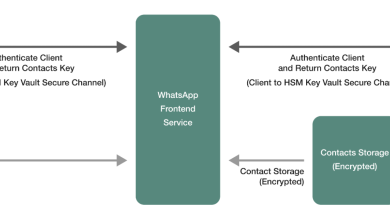Understanding Amazon Sponsored Display Ads: Amazon 101 for Business
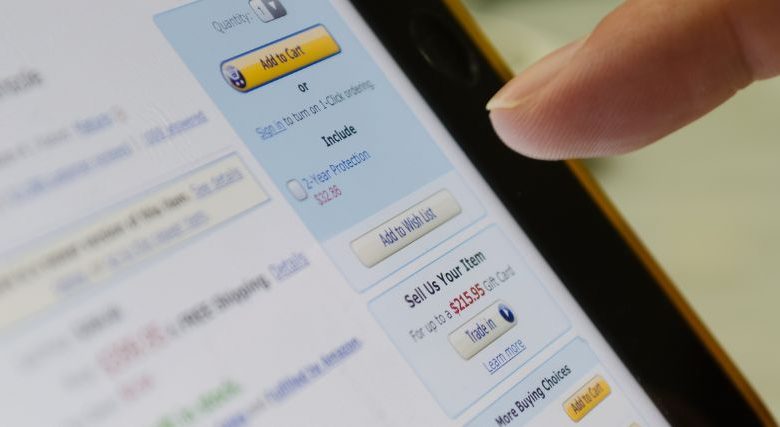
If you’re ready to take your e-commerce game to the next level, discover the power of Amazon Sponsored Display Ads!
Yes, they are those flashy banner ads with eye-catching images that you see popping up while you’re scrolling through your favorite products or pages, whether you’re in or out of Amazon.
As an e-commerce business owner or manager, you can harness them, too, to powerfully supercharge your sales and help your business conquer new heights.
In this ultimate guide, we’re going to break down everything you need to know about Amazon Sponsored Display Ads. We’ll cover the basics, why they matter, how to create killer ads, and so much more.
You’ll also learn about the effective strategies of selected e-commerce businesses that have used Amazon Sponsored Display Ads successfully, which will inspire you to come up with your own creative advertising game plan for your business.
Amazon Sponsored Display Ads are like your own personal cheerleaders, waving your products in front of potential customers as they browse Amazon and other websites across the internet. They help you reach audiences and engage or re-engage shoppers, whether they’re on or off Amazon. They’re designed to boost visibility, drive traffic, and ultimately increase sales for your e-commerce business.
These ads target:
- Interests of different shoppers
- Complementary products
- Competitors in the same niche you’re in
Sponsored Display Ads are retail-aware. They appear only when your products are in stock and are the “Featured Offer.” If your products are out of stock or are not the Featured Offer, the ads automatically stop. This keeps your ad spending in check and increases your chances of conversion.
These ads come in various shapes and sizes, including:
- Product Display Ads: These ads appear on product detail pages, targeting shoppers who are already interested in similar products.
- Audience Display Ads: These ads target specific audiences based on their shopping behavior, interests, and demographics.
- Views Display Ads: These ads target customers who have viewed similar products but haven’t made a purchase yet, reminding them of your offerings.
Amazon launched its Sponsored Display Ads in November 2019 to replace Product Display Ads. All Product Display Ads campaigns are now part of Sponsored Display Ads, without any more action required from advertisers.
Amazon Sponsored Display Ads are basically display advertising solutions for businesses that sell in the Amazon store or not. Amazon Sponsored Display Ads reach customers where they are, across the Amazon store and thousands of apps or websites, such as Amazon-owned and operated sites like Twitch and IMDb, and third-party destinations.

Amazon Sponsored Display Ads are powered by shopping signals. Amazon notes what users are buying, what product detail pages they’re visiting, what product categories they like, and how their shopping carts have looked like in the past. Then, Amazon generates a list of product recommendations for shoppers that might interest them at an individual level. These product recommendations are the Sponsored Display Ads.
Sellers choose one of two available targeting tactics based on their marketing goals. They can either do contextual targeting or audience targeting.
With contextual targeting, formerly known as product targeting, sellers reach out to users who are actively browsing products similar to their products and based on their predefined characteristics. These characteristics may include brand, category, price, Prime shipping eligibility, and star rating.
Then, sellers pick the detail pages, shopping results pages, and customer reviews for products that share the sellers’ pre-set characteristics for their ad placements. This tactic is best for targeting potential customers in the consideration stage of their customer journey.
With audience targeting, sellers can target and retarget shoppers based on their past activities. Using Amazon’s Lifestyle Insights, sellers can customize their audiences’ ad campaigns for user behavior on Amazon-owned websites such as IMDb, Prime Video, and Twitch. This tactic works best for targeting potential customers in the awareness stage and existing customers in the post-purchase stage.
After choosing their targeting tactic, sellers then place a bid for the Sponsored Display Ad. The highest bidder wins the display ad placement, and their product is recommended to shoppers. The ad might be a banner, a side widget, or even a video ad (currently in beta), depending on the seller’s campaign configurations.

Amazon Sponsored Display Ads can be used to target consumers in the top (awareness) and mid-funnel (consideration) phases. They are also used to retarget high-intent shoppers who viewed specific products on Amazon, so they can also be a tool for the conversion phase of the customer journey. On average, the customer journey on Amazon takes 6 to 7 days.
With the right targeting, Sponsored Display Ads can increase quality traffic and contribute to a better return on investment (ROI).
In a study of more than 40,000 advertisers, Amazon found that advertisers who activated Sponsored Display Ads for the first time saw quick next-month increases.
There were 33.9% more impressions, 3.6% more detail page views, and 2.6% more new-to-brand customers in the following month. Brands that created a Sponsored Display Ad product targeting campaign for the first time experienced, on average, 28.8% more total sales, 4.2% more detail page views, and 2.6% more new-to-brand customers in the following month compared to those that did not.
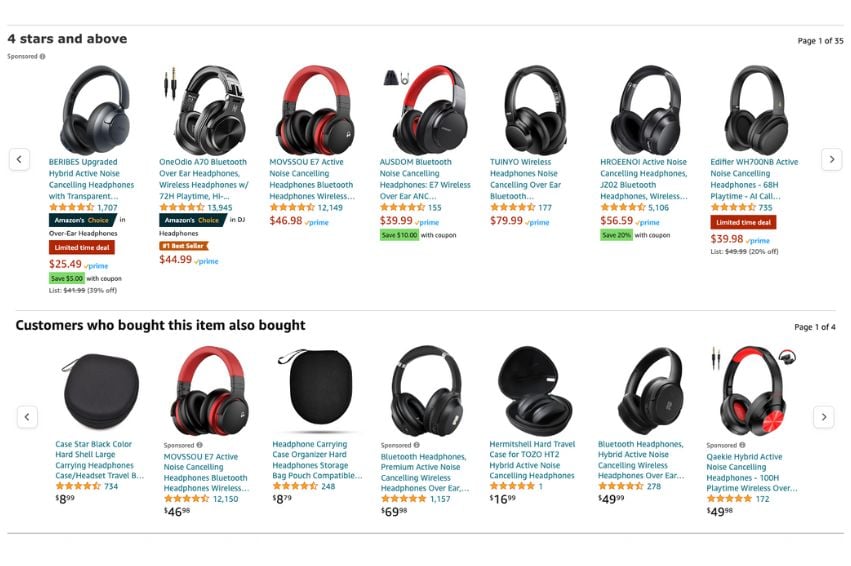
Sponsored Display Ads are shown all across the Amazon Marketplace and outside of Amazon on third-party apps and websites such as IMDb and Twitch.
This may not hold true for all sellers yet, as Sponsored Display Ads continue to be rolled out in some country marketplaces. Currently, Sponsored Display Ads are available in the following countries:
- Australia
- Brazil
- Canada
- France
- Germany
- India
- Italy
- Japan
- Mexico
- Netherlands
- Spain
- United Arab Emirates
- United Kingdom
- United States
On Amazon, they appear on the home page, shopping results page, customer reviews section, and product details pages of similar items and categories.
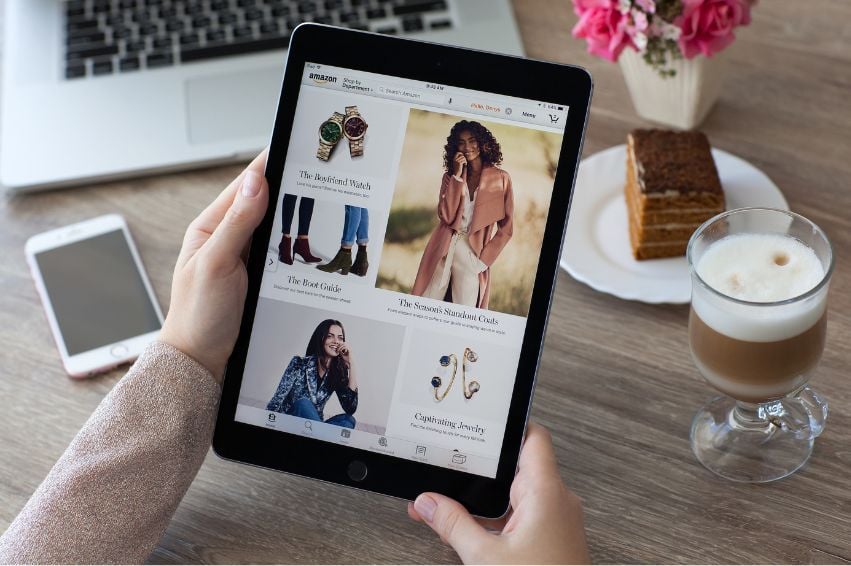
Sellers enrolled in the Amazon Brand Registry, agencies, vendors, and technology providers in the countries where Amazon Sponsored Display Ads are available.
Sellers who want to target Amazon audiences, as well as their own custom-built audiences using Amazon shopping signals to remarket with intuitive and flexible targeting, would benefit the most from using Amazon Sponsored Display Ads.
Amazon audiences are composed of large audience segments that include:
- In-market: audiences who are already “in the aisle” and have been recently shopping for products in a given category. They are fit for marketing goals that intend to capture share-of-mind, drive product awareness, and even drive consideration, since these audiences are almost ready to buy.
- Interests: audiences who may be prospective customers, based on what they already frequently browse for and buy. They are fit for marketing goals that aim at raising awareness of your brand and products.
- Life events: audiences categorized according to upcoming life moments, such as “traveling soon” or “having a baby soon.” They give sellers the opportunity to raise awareness and consideration for their brands and products.
- Lifestyle: audiences that reflect a diverse array of aggregated viewing and shopping behaviors, such as browsing on IMDb, streaming on Prime Video or Twitch, and shopping on Amazon. Their behaviors reflect shared preferences and are mapped to lifestyle segments such as “fashionistas,” foodies,” and “fitness enthusiasts.” These audiences are best targeted for awareness campaigns.
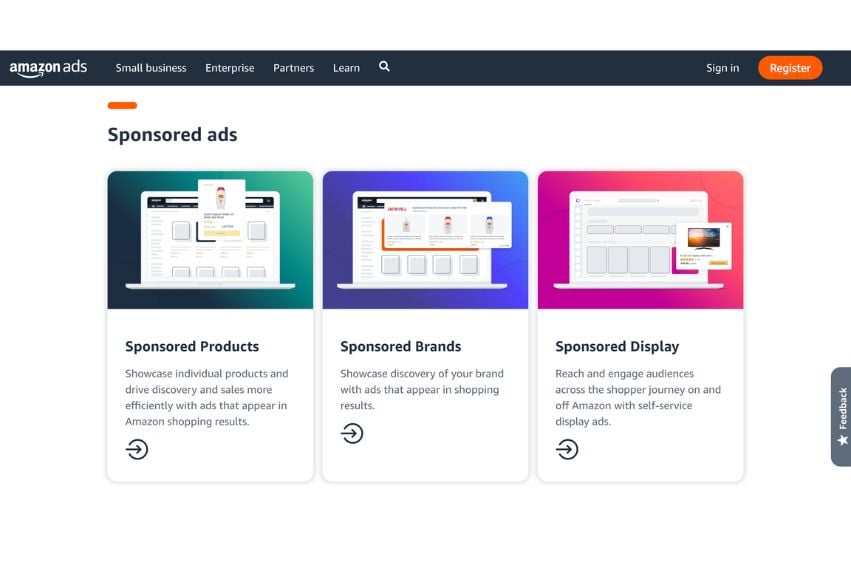
A primary difference between Amazon Sponsored Display Ads from both Amazon Sponsored Products and Amazon Sponsored Brands is that Sponsored Display ads appear in different locations on a wide range of places on or off Amazon. Sponsored Products and Sponsored Brands appear only on the Amazon store.
Another key difference between Amazon Sponsored Display Ads from both Amazon Sponsored Products and Amazon Sponsored Brands is that they don’t appear to shoppers based on their keyword searches but on shopper behavior.
For example, when a shopper goes to Amazon.com and types the keywords for what they’re looking for in Amazon’s search bar, Sponsored Products and Sponsored Brands appear based on what the shopper searched for. But, since Sponsored Display Ads are shown based on shopper behavior or shopping signals, they will appear to the shopper if the shopper:
- Is looking at the product categories in which your product falls.
- Is looking at a product listing similar to yours.
- Has previously bought a product in the same category as yours or in a category related to your product.
- Has previously viewed your product.
- Has previously purchased your product.
A third main difference is the advanced, multiple, and more granular targeting options you can have with Sponsored Display Ads. Sponsored Products and Sponsored Brands offer only basic and limited targeting options.
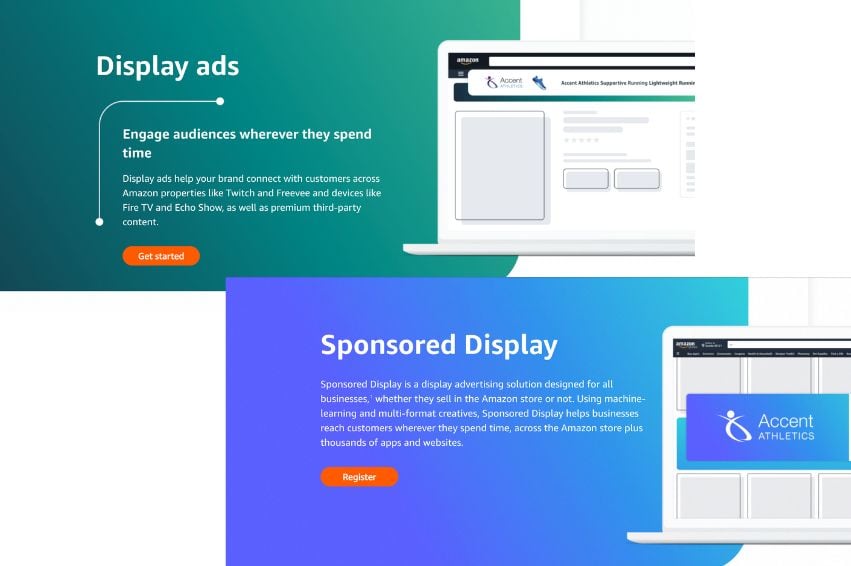
No. Although both Amazon Sponsored Display Ads and Amazon Demand-Side Platform (DSP) Ads help reach customers both on and off Amazon and work well with third-party platforms, they differ in several ways.
In terms of brand eligibility, Sponsored Display Ads’ traffic always leads back to your Amazon listings, while DSP Ads can send traffic to a product listing on Amazon or external direct-to-consumer (DTC) websites.
In terms of cost structure, Sponsored Display Ads use a pay-per-click (PPC) model, while DSP Ads use a cost-per-mille (CPM) model. This means that with Sponsored Display Ads, your cost is calculated based on the average price you pay each time someone clicks your ads. With DSP Ads, you pay for every 1,000 impressions on your ads.
In terms of minimum investment, Sponsored Display Ads have a lower entry barrier. You can start with a minimum spend of $1 per day. To make the most use of DSP Ads, you need to invest a minimum of $10,000 monthly spend for self-service, or $50,000 monthly spend for managed service.
In terms of creative control, Sponsored Display Ads automatically generate banner ads that contain a product image, pricing, deals, star ratings, and a “Shop Now” button. You can still change the headline copy and brand logo, though. With DSP Ads, you can design your own creatives, whether using Amazon creative templates or through complete customization.
In terms of audience targeting, Sponsored Display Ads let you target shoppers based on their interests, shopping behavior, or specific products or categories they’ve shown an interest in. DSP Ads offer more diverse and granular targeting options such as demographics, lookalike audiences, purchase intent, remarketing, and more. You can also create custom audiences with DSP Ads based on Amazon’s data.
In terms of brand protection, Sponsored Display Ads don’t offer any brand protection tools yet, while DSP Ads do. These tools help you monitor everything, from real-time bids to site reviews, traffic quality, and viewability.
In terms of learning curve, Sponsored Display Ads are easier to work with from the Amazon Advertising Console. There are automated features, such as for bidding and targeting, so you can optimize campaigns without manual intervention. DSP Ads involve programmatically buying ads at scale. They require more advanced configuration knowledge and skills, such as programmatic advertising concepts and strategies.
Choosing which is best for your business essentially depends on your goal, product contexts, and campaign direction.
If your goal is to boost sales quickly at lower costs, then Sponsored Display Ads will get you faster results. If you aim to build brand awareness and reach a wider audience over time, and you have a bigger budget for it, DSP Ads would be better for you.
If you sell a frequently bought product with a lot of competition, such as groceries or household items, Sponsored Display retargeting ads can keep your brand in customers’ minds often. If you have a niche product with a specific target audience, DSP Ads might be more effective.
If you want to implement retail-centric campaigns, Sponsored Display Ads are the better option. If you want to programmatically buy display, video, and audio ads at scale, DSP Ads are the way to go.
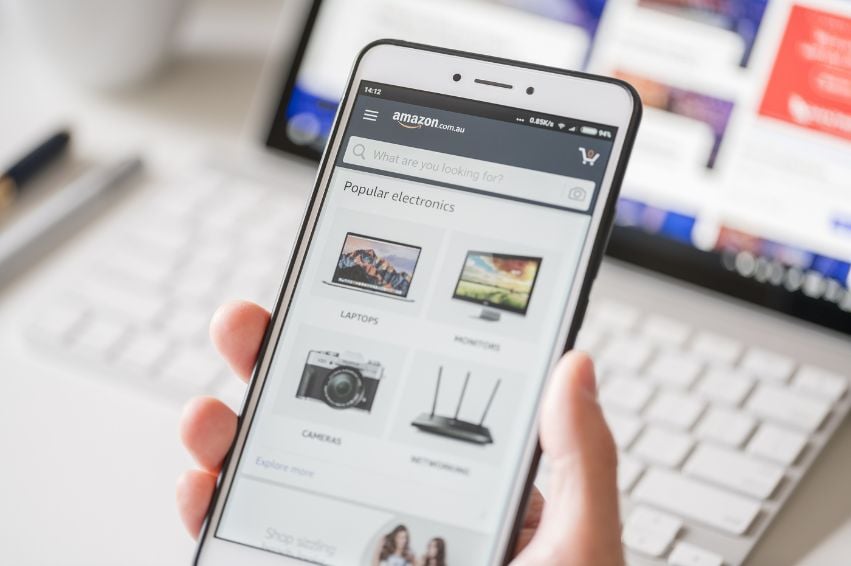
You might be thinking, “Why should I bother with Sponsored Display Ads when there are so many other ways to market my products?”
Well, basically, Amazon Sponsored Display Ads are like your shortcut to success. They matter for your business because of these four important key reasons:
1. Increased Visibility: With Sponsored Display Ads, your products are front and center, grabbing the attention of potential customers as they shop on Amazon and beyond.
2. Targeted Reach: Amazon’s targeting options are like a laser beam, allowing you to reach precisely the audience you want based on their shopping behavior, interests, and demographics.
3. Boosted Sales: Studies have shown that Sponsored Display Ads can significantly boost sales and product visibility. By targeting shoppers who are already in a buying mindset, you increase the chances of converting them into customers.
4. Cost-Effective: Sponsored Display Ads work on a cost-per-click (CPC) basis, meaning you only pay when someone clicks on your ad. This makes them a cost-effective way to reach potential customers and drive traffic to your product listings.
These are why Sponsored Display Ads can potentially elevate your game. Now, we will see how you can make the most of them for your e-commerce business.
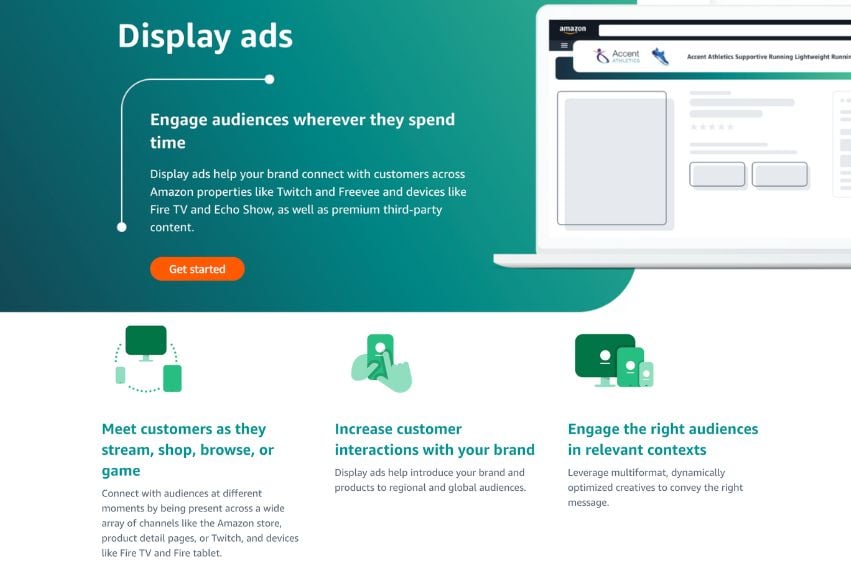
Getting started with Amazon Sponsored Display Ads is easier than you might think. Here’s a step-by-step guide to help you navigate the process:
1. Set Up Your Amazon Advertising Account
The first thing you’ll need to do is set up your Amazon Advertising account if you haven’t already. Simply visit the Amazon Advertising website and follow the prompts to create your account. It’s quick, easy, and free!
2. Choose Your Campaign Objective
Next, you’ll need to choose your campaign objective. Are you looking to drive sales, increase brand awareness, or something else? Select the objective that aligns with your goals and objectives.
3. Add Your Products
A key best practice is to always add multiple products to your Sponsored Display Ad campaign. This way, you can participate in more auctions and increase your chances of having your products featured in the ad placements.
When shortlisting the products for your Sponsored Display Ad campaign, select the ones that are closely related, are in a similar price range, and have good ratings and reviews. Product listings should also be well-optimized with the proper bullet points and high-quality images.
4. Select Your Targeting Options
Now, it’s time to pick your targeting options. You can target your ads based on contextual or audience targeting, as previously discussed. Take some time to think about who your ideal customers are and how you can reach them effectively.
A recommended best practice, though, is to use a combination of targeting tactics. Based on a study, sellers who use more than one targeting tactic for their Sponsored Display Ads campaigns generate 3.2% higher sales than campaigns that use only one tactic.
5. Set Your Budget and Bid
Once you’ve decided on your targeting options, it’s time to set your budget and bid. Decide how much you’re willing to spend on your ads and how much you’re willing to pay for each click. Start with a budget that you’re comfortable with and adjust as needed based on the performance of your campaigns.
Don’t stress too much about how much to invest as starting bids when launching your first Sponsored Display Ad campaign. As you learn more about your audience, you can tweak and fine-tune it over time.
Generally, you can start with $1 daily for Amazon Sponsored Display pay-per-click (PPC) ads. For Amazon Sponsored Display vCPM bids, you can start within the range of $3 to $5 daily.
Amazon recommends that you select a budget that’s high enough to help keep your ads running throughout the day, ideally at a minimum of $10 daily per campaign.
6. Create Your Ad Creative
Now it’s time to create your ad creative. This is where you’ll design the visuals and write the copy for your ads. Make sure your creatives are eye-catching, engaging, and relevant to your target audience.
7. Launch Your Campaign and Monitor Performance
Once everything is set up, it’s time to launch your campaign! Sit back, relax, and watch as your ads start reaching potential customers. But don’t forget to monitor the performance of your campaigns regularly. Pay attention to metrics like click-through rate (CTR), conversion rate, and return on ad spend (ROAS) to gauge the effectiveness of your ads and make adjustments as needed.
How to Create Awesome Amazon Display Ads

Creating effective Sponsored Display Ads is all about creativity and strategy. Here are some tips to help you get the most out of your campaigns:
1. Know Your Audience: Before you create your ads, take the time to understand your target audience. What are their interests, pain points, and preferences? Tailor your messaging and imagery to resonate with them on a personal level.
2. Use Eye-Catching Visuals: Visuals are everything in online advertising. Use high-quality images and engaging graphics to grab attention and entice viewers to click on your ads. You can try using a photo generator tool to source visually appealing images that will catch people’s attention.
3. Create Compelling Copy: Keep your ad copy concise, compelling, and action-oriented. Highlight the benefits of your products and include a clear call-to-action (CTA) that prompts viewers to take the next step, whether it’s clicking through to your product page or making a purchase.
4. Test and Iterate: Don’t be afraid to experiment with different ad creatives, messaging, and targeting options. Test different combinations to see what resonates best with your audience, and iterate based on the results.
5. Optimize for Mobile: With more and more people shopping on their mobile devices, it’s crucial to ensure that your ads are mobile-friendly. In the United States, around 66% of the population have shopped on their mobile phones at least once. Make sure your ads load quickly, look great on smaller screens, and are easy to interact with.
In general, we also highly recommended using multiple optimization strategies for Sponsored Display Ads, such as optimizing for reach, page visits, and conversions.
6. Track Your Results and Learn From Them: Finally, make sure you’re tracking the performance of your ads regularly. Pay attention to metrics like click-through rate (CTR), conversion rate (CR), new-to-brand (NTB) orders, NTB order rate, Amazon cost of sales (ACoS), ad spend, ad impressions, and return on ad spend (ROAS). These will help you gauge the effectiveness of your campaigns and make adjustments as needed.
In addition, sign up for the Amazon Marketing Cloud Services, which can further help you with more insights to better understand your audience and create more effective strategies for your campaigns.
Here are successful use cases of Amazon Sponsored Display Ads that helped brands in boosting discovery, awareness, and conversion of their products, reach U.S. audiences, and amplify sales to new and established audiences.
1. Bagail: Brand and Product Discovery
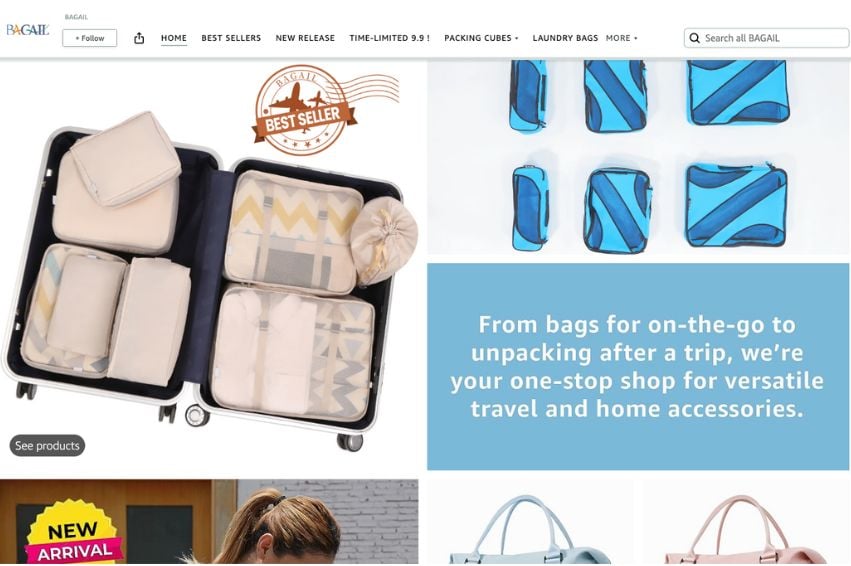
A travel and home accessories company founded in 2015, Bagail focuses on its mission of being a “one-stop shopping solution for all travel products.” It offers laundry bags, travel accessories, umbrellas, and innovative packing cubes, which are high-quality travel solutions for saving luggage space.
As soon as they started, Bagail sold in the Amazon store to tap into a global and engaged customer base and to leverage Amazon’s fulfillment capabilities. By 2019, it started using Amazon Ads in the United States to boost the visibility of its best-selling products and the discoverability of its newly released items.
Bagail focused on two advertising objectives: to drive more brand and product awareness and to use deals to help move its inventory faster. To achieve these, Bagail decided to use a mixed blend of Amazon advertising solutions: Sponsored Products, Sponsored Brands, and Sponsored Display Ads.
During promotional periods, Bagail focused on using Sponsored Display Ad campaigns to optimize for reach using a viewable per thousand impressions (vCPM) model. This bid optimization strategy, coupled with Sponsored Display’s unique coupon feature, helped a wide range of shoppers see their ads and offerings, which Bagail attributes to boosting their impressions, clicks, and conversions.
Bagail particularly monitored impressions as a core metric, as it indicated reach and awareness, which are key parts of its main advertising goals. It also used this “optimize for reach” strategy for its two other Amazon ad products.
The result? Bagail discovered that the discoverability for their brand name and products doubled from 2021 to 2022. Ad-attributed sales for Sponsored Display Ad campaigns grew by 100%.
Bagail was able to successfully achieve its two advertising goals and plans to continue selling on Amazon to grow their business.
Amazon’s study of more than 40,000 advertisers it found that campaigns that used Sponsored Display Ads performed better. In addition, brands that used Sponsored Display Ads on top of Sponsored Products and Sponsored Brands generated a 14% increase in total sales in the next 20 weeks following the start of the campaign. This was compared to the predicted total sales without Sponsored Display Ads adoption.
The study concluded that, in general, total sales, ad-attributed sales, and returns on ad spend (ROAS) were highest in campaigns that incorporated Sponsored Display Ads with Sponsored Products and Sponsored Brands. The Bagail success story is a testament to this key finding.
2. Le Col and Fluid Commerce: Reaching U.S. Audiences
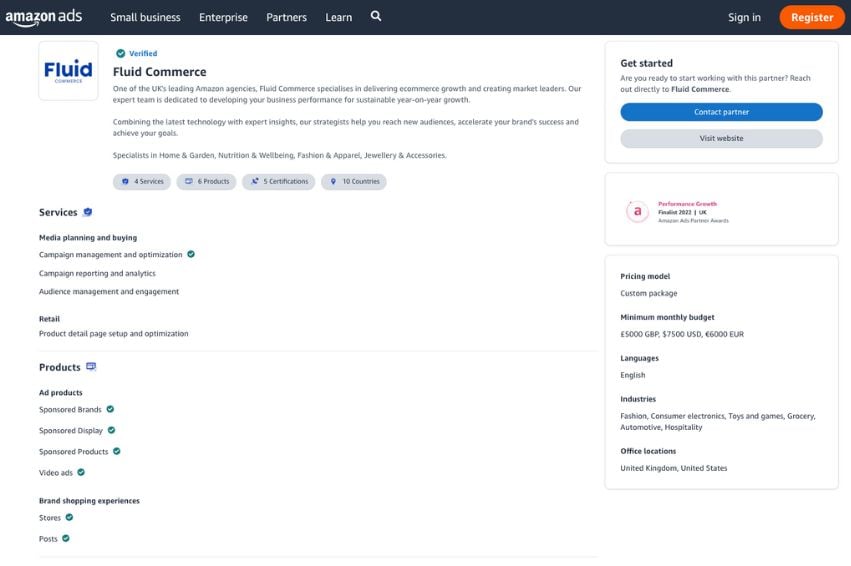
When Le Col, a U.K.-based premium bike clothing company, decided to expand into the U.S. market, they knew it would be a daunting task.
The apparel industry was already a very competitive shopping space to begin with, and it was a new brand coming into a new market in the United States. Le Col knew it must have a robust and compelling advertising campaign to make an impact.
Le Col is already a recognized quality bike apparel brand in the United Kingdom, offering dynamic bike wear inspired by the world of professional bicycling. Still, Le Col understood that although Fulfillment by Amazon would already help it in expanding its reach online and raise its delivery offering in the United States, it still needed a high-impact advertising campaign to differentiate itself.
So, in 2022, Le Col engaged Amazon Ads Partner Fluid Commerce to help drive brand awareness and boost revenues. Fluid Commerce designed a well-researched and well-rounded advertising strategy to meet Le Col’s unique needs.
To build brand awareness, Fluid Commerce established these specific goals:
- Boost brand revenue growth with an efficient total advertising cost of sale (TACOS)
- Increase new-to-brand (NTB) orders by 25% within 12 months
- Achieve a 166% year-on-year increase in monthly Brand Store views in the first year of the campaign.
Fluid Commerce’s prelaunch strategy included optimizing Le Col’s product details pages for U.S. consumers and verifying that Le Col’s Amazon standard identification numbers (ASINs) complied with best practices. It also recommended developing A+ Content to highlight its premium-quality value proposition and its premium-price positioning.
From this, Le Col launched its page with a robust Sponsored Ads strategy. It used Sponsored Products to promote individual product listing with shoppers already familiar with the brand and on pages for similar products. Later, it also used Sponsored Brands to assist with building NTB orders and Sponsored Display Ads to re-engage shoppers who had previously viewed their products, as well as similar products.
Within 6 months from campaign launch, Fluid Commerce also started supplementing Le Col’s Sponsored Ads strategy using Amazon’s Posts. Posts help capture attention and nurture new customer connections by using engaging product imagery, videos, and effective content.
Posts’ high-quality lifestyle imagery and user-generated content (UGC) represented Le Col’s brand in an authentic way, which strengthened its brand positioning. In addition, to help generate product reviews as a new seller, Le Col enrolled in Amazon Vine, which is an invitation-only program that lets insightful reviewers on Amazon to share their product experiences with the brand.
The results? Within 12 months, Le Col and Fluid Commerce achieved and even exceeded key milestones. Le Col was able to reach its TACOS goal and grow revenue by 750% from May 2022 to April 2023. Page views have steadily grown since February 2023, exceeding 1,000 views daily.
Le Col’s success story highlights how a combination of Brand Store development, organic listing optimization, and a combination of Sponsored Display Ads, Sponsored Products, and Sponsored Brand. Fluid Commerce was able to help Le Col not only achieve success in a new country but also set it on a very promising path for future growth and expansion.
3. Sensibo and Wise Commerce: Boost Sales To New and Established Audiences

Since 2013, Sensibo, a climate technology company, has been developing smart air conditioning technologies for a more sustainable planet. It aims to help people in homes and businesses save on energy costs and live better.
As it grew over the last decade, Sensibo recognized the need to reach more customers by expanding its outreach to new and existing audiences. However, it faced two major marketing challenges:
- With existing audiences, it needed to grow its brand and gain more customers.
- With new audiences, it needed to achieve brand awareness and achieve profitability with a lean budget.
These implied that Sensibo needed to build full-funnel marketing strategies in different markets.
Sensibo contracted Wise Commerce to design and launch marketing campaigns that were unique to each of their four target country markets: Australia, Italy, Spain, and the United States.
Wise Commerce crafted and implemented a full-funnel marketing campaign aimed at reaching new-to-brand (NTB) customers, boosting ad-attributed sales, and improving year-on-year sales with an efficient TACOS.
The campaign emphasized Sensibo’s energy-saving capabilities and positive environmental impact. It promoted top-performing products, used premium graphics and engaging videos, and crafted compelling calls to action around this main narrative messaging. This differentiated Sensibo as a brand, setting it apart in the industry and establishing it as a pioneer in smart air conditioning technology.
Wise Commerce used a combination of Sponsored Display Ads, Sponsored Products, Sponsored Brands, and Sponsored Brands Video Creative to reach each phase in the marketing funnel. These ads helped Sensibo expand its audience, deliver its brand and product narratives, drive conversions, boost sales, and even encourage repeat orders.
All throughout the campaign, Wise Commerce and Sensibo monitored and analyzed performance metrics, performance behavior, and campaign outcomes to further shape their marketing tactics in mature markets in Italy, Spain, and the United States, as well as its emerging Australian market.
Using insights from this monitoring and analysis, they fine-tuned their strategies to more closely align with each region’s unique characteristics. They particularly focused their promotional efforts on the products with the most promising sales potential, therefore maximizing their revenues and paving the way for sustainable future growth.
In the United States, Sensibo’s marketing campaign resulted in a year-on-year (YoY) sales growth of 111% and 62% increase in sales revenue.
Among NTB customers in Italy and Spain, Sensibo gained a 56% growth in sales compared to the previous year. They also reached their profitability goals, with a YoY revenue growth of 32%.
In Australia, sales from NTB customers grew by 184% YoY and 451% growth in sales revenue YoY. This clearly showed the outstanding success of Wise Commerce’s brand awareness initiatives. Wise Commerce was able to tap into a growing consumer trend that the Amazon Ads Higher Impact Study already identified: how consumers not only want quality products but also sustainable products that make the world a better place.
This even earned Wise Commerce finalist status in Amazon’s 2023 Global Expansion Awards, a program that celebrates the bold and visionary marketing campaigns that Amazon Ad Partners deliver for advertisers. Amazon recognized Wise Commerce’s exemplary success in boosting brand awareness across different audiences in different countries.
Amazon Display Ads: A Game-Changer For Your Business

Amazon Display Ads are a game-changer for ecommerce businesses looking to increase visibility, drive sales, and build brand awareness. By leveraging its advanced and multiple targeting options, creative opportunities, and analytical insights that Amazon Advertising provides, you can create campaigns that resonate with your audience and deliver real results.
You can do this on your own or with a hired staff, but you will still scale the learning curve. Or, you can also simply hire an Amazon Display Ads consultant to do this for you quicker, with expertise and more efficiency, and faster results for your business.
So what are you waiting for? The choice is yours. It’s time to unleash the power of Amazon Sponsored Display Ads and take your ecommerce business to new heights.


